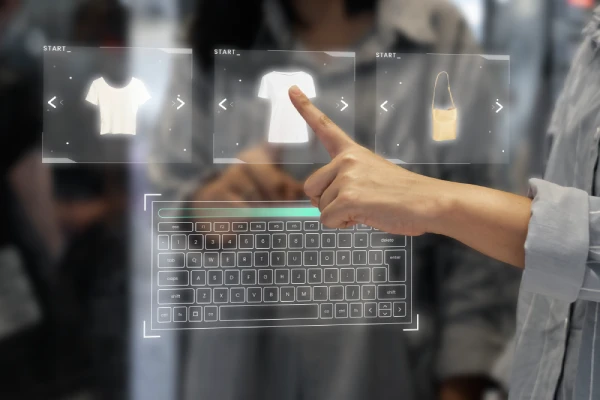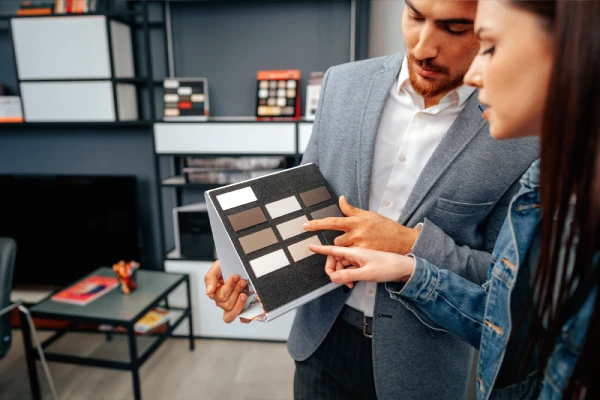Education
Franchise Interior Design 101: Ensuring Brand Consistency Across Locations

Franchise Interior Design serves as a guide to maintaining a unified brand look and feel across all franchise locations. For brokers, contractors, and customers alike, consistent interior design in franchises is not just about aesthetics, it’s a strategic asset. A customer should walk into any franchise outlet and immediately recognize the brand’s identity. This article covers why standardizing design elements is crucial, how to use design guidelines and prototypes, balancing uniformity with local tweaks, speeding up new openings and remodels through standards, and examples in food, retail, and wellness sectors.
The Importance of Standardized Design Elements for Brand Cohesion

Maintaining brand cohesion means ensuring every location visually communicates the same brand message. Standardizing interior elements—color schemes, furniture style, signage, and decor—creates a familiar atmosphere everywhere. Franchise design guidelines act as a “rulebook for maintaining brand identity”, detailing the architectural style, colors, signage, and layouts that all locations must follow.
This consistency reinforces the brand’s ethos and values at every site. It also reinforces customer trust: patrons know they can expect the same environment and quality regardless of which city they are in. In fact, architectural consistency “reinforces brand identity, ensures customer familiarity, and promotes trust across different locations”
A well-designed interior is cohesive and recognizable in all franchise units, helping customers instantly identify and connect with the brand.
Whether a customer walks into a store in Miami or New York, physical appearance should reflect a consistent brand image and a unified experience. By standardizing key design elements, franchises build a strong, memorable identity that underpins every interaction.
Developing Design Guidelines and Prototype Stores
Achieving such uniformity starts with comprehensive design guidelines. Franchisors typically create an official brand design manual covering everything from logo usage and color palettes to approved materials and interior layouts. These guidelines ensure every franchisee knows the exact specifications to implement. They are essentially the design blueprint of the franchise concept. For instance, a franchise design prototype (often a fully built model store or detailed set of drawings) serves as a tangible blueprint that “encompasses the essence of the brand, its offerings, and customer experience”, ensuring a consistent brand identity across all locations.
By refining a prototype location, franchisors can test and perfect the interior design concept before rolling it out widely. This prototype defines the look (flooring, lighting, layout flow, fixtures) that embodies the brand. Once finalized, the design is replicated system-wide through clear guidelines. These guidelines often include imagery and specifications for furniture, fixtures, and equipment (FF&E), standard finishes, and even scent and music, to keep the sensory experience consistent. In practice, franchisees receive a detailed design package or brand book, which they must follow to build out their store. Adhering to such guidelines results in a cohesive environment everywhere, from flagship stores to small-footprint outlets.
Balancing Consistency with Site-Specific Customization

While consistency is paramount, flexibility for site-specific customization is also important. No two franchise locations are exactly alike—physical spaces differ and so do local market preferences and regulations. Successful franchises find a balance between brand uniformity and local adaptation. Certain core design elements should remain non-negotiable (for example, the logo, primary colors, or signature fixtures), but there can be room to adjust peripheral details to fit local needs. As one guideline notes, franchises maintain consistency “by prioritizing core brand elements while being flexible with aspects that can be adapted to meet local regulations”
For instance, local building codes might require different exterior materials or additional accessibility features, so the prototype design must be adjusted accordingly without losing the brand’s character.
Moreover, allowing a controlled degree of localization can make the brand more relevant to each community. Franchisors often encourage local adaptations within guidelines, meaning franchisees can incorporate elements that resonate with their community “within the bounds of the established branding guidelines.” This approach “allows for a balance between consistency and relevance to local markets”, letting franchisees add a “touch of local flavor” while still upholding the core brand identity. For example, a franchise coffee shop might permit each location to display artwork by local artists or use one accent color reflective of the region, as long as the overall interior scheme stays true to the brand’s look.
Adapting to the local context also extends to the customer experience. Imagine a fitness franchise: the brand guidelines mandate the standard gym layout, equipment types, and branded color scheme for all facilities. However, a franchisee near a retirement community might offer extra low-impact classes suited for seniors, tweaking the interior layout to include more space for gentler exercise zones. This doesn’t break brand consistency—it tailors the service to local demographics while the brand look and feel (logo placement, wall colors, flooring type, etc.) remains uniform. Such flexibility, when done within a framework, can enhance local appeal without diluting the brand.
How Design Standards Streamline Rollouts and Renovations

Standardized interior design isn’t just about pleasing aesthetics—it also greatly improves efficiency in launching and updating locations. Having a predefined design prototype and standards accelerates new store buildouts. Franchisees and contractors don’t need to reinvent the design from scratch for each site; instead, they follow the established template. This leads to “quicker build/execution time” and cost savings, since materials and layouts have been vetted and optimized in advance.
One design firm notes that by standardizing elements like layout, lighting, and décor, franchisors make new location roll-outs more time- and cost-efficient. When everyone is working from the same playbook, construction documents get approved faster and the learning curve for contractors is lower, meaning stores open sooner.
Renovations and refreshers also benefit from design standards. Most franchises require periodic remodels of locations to keep the brand image up to date. With clear standards in place, these remodels can be executed uniformly. Franchisors often update the prototype design every few years (for example, introducing a modernized color scheme or new countertop material) and then expect all locations to implement the changes. Because the original build used standardized components, swapping in updated elements can be straightforward and scalable. Design standards support efficiency here by providing a roadmap for upgrades. A well-planned prototype uses durable materials that “will last the length of your franchise agreement” to avoid mid-term failures; otherwise, worn-out furnishings reflect poorly on the brand.
When updates are needed, franchisees know exactly what new finishes or fixtures to use, often sourcing them from approved suppliers. This consistency means the brand refresh happens smoothly across the entire network, and customers everywhere enjoy the improved environment around the same time.
Furthermore, sticking to standard designs allows bulk procurement of materials and fixtures, reducing costs. Franchise systems can leverage their scale to negotiate better pricing on furniture, lighting, signage, etc., when every outlet uses the same pieces. Construction becomes more predictable and repeatable, which general contractors appreciate because it reduces surprises. For instance, if all restaurant franchises use an identical kitchen layout and equipment spec, rollouts in new cities become almost plug-and-play from a construction standpoint. Consistency in design thus not only protects the brand image but also creates operational efficiencies, from faster approvals to easier maintenance. In short, well-documented interior design standards are a cornerstone of scaling up franchises successfully.
Sector Applications: Food, Retail, and Wellness
Every franchise sector applies these principles of interior design consistency, though the specifics can vary:
-
Food & Beverage Franchises:

Quick-service restaurants (QSRs), cafes, and other eateries rely heavily on prototype designs to guarantee that the dining experience feels familiar everywhere. Customers expect the same menu and a recognizable ambiance whether they enter McDonald’s in one state or another. Interior design elements like menu boards, counter design, seating style, and even wall art are standardized for a cohesive look. Yet, minor local touches might be allowed – for example, a fast-food chain could incorporate a regional mural in each location, as long as it fits the overall theme. Consistent design in food franchises also supports health and safety compliance; kitchen layouts are duplicated for efficiency and cleanliness, and customer areas reinforce the brand’s hospitality standards. By following a prototype restaurant design, franchise owners can open new outlets quickly with an efficient floor plan that has proven workflow and customer comfort.
-
Retail Chains:

In retail franchises (such as convenience stores, apparel boutiques, or electronics outlets), brand consistency in interior design helps customers navigate and trust the stores. Standardized store layouts ensure that products are displayed similarly, and promotional signage is in the expected places in every location. For instance, a convenience store franchise might dictate that coolers, checkout counters, and aisles follow a specific configuration and color scheme, so every shop feels identical in layout. This uniformity improves customer familiarity – shoppers can instantly find what they need because the store’s arrangement and look are what they’ve seen before. At the same time, design guidelines accommodate different store sizes; a downtown retail space might be smaller than a suburban one, but designers adjust the prototype (scaling shelving units or the spacing of displays) to fit without losing the brand’s visual identity. Consistent lighting, flooring, and even the music in retail franchises all contribute to a seamless brand experience. When it’s time to remodel, perhaps to update the brand’s style or add new product displays, the chain-wide design standards ensure each store updates in lockstep, preserving that all-important consistency.
-
Wellness and Fitness Centers:

Franchises in the wellness sector – such as gyms, yoga studios, spas, or wellness clinics – also use interior design to unify their brand. Here, consistency builds trust and comfort; members visiting any branch of a fitness franchise expect the same equipment setup and environment. Standardized design features might include the reception area layout, locker room finishes, lighting levels, and color psychology elements that reflect the brand’s ethos (for example, a calm blue palette for a spa, or energetic colors and motivational wall graphics for a gym). At the same time, these franchises often tailor their services to local community needs without altering the brand aesthetic. As discussed earlier, a fitness franchise may adjust class offerings or floor space allocation for a certain demographic, but within a consistent interior backdrop. Wellness franchises also benefit from standard design in terms of regulatory compliance – e.g. ensuring all locations have proper accessibility and safety features as per brand standards. By rolling out a proven design template, a spa franchise can ensure every new location has the same soothing atmosphere and functional treatment rooms, accelerating opening times. Any updates (like introducing new equipment or refreshing decor to stay modern) are rolled out system-wide through the design standards, so that each wellness center remains aligned with the brand’s promise of a rejuvenating experience.
Conclusion
In franchise businesses, interior design is much more than decoration – it is a key strategy for brand consistency and scalability. By standardizing design elements and adhering to well-crafted guidelines and prototypes, franchises create a cohesive identity that customers recognize and trust. At the same time, successful franchises wisely allow some flexibility for local customization, ensuring relevance in every market without diluting the brand. Rigorous design standards also streamline the expansion process, making new store rollouts and periodic renovations faster, cost-effective, and uniform across the network. Whether in a café, a retail shop, or a fitness studio, consistent interior design underpins a uniform customer experience that drives loyalty. Franchise owners, contractors, and brokers all benefit from this clarity: it simplifies construction and maintenance, and it protects the brand’s integrity. With a solid “Franchise Interior Design 101” approach, a franchise can confidently grow from one location to hundreds, knowing every space will equally embody the brand’s look and feel, no matter where it opens.
At AI Spaces, we specialize in creating high-performance franchise interiors that balance brand consistency with smart, site-specific solutions. Whether you're launching your first location or scaling to your hundredth, our team understands how to translate brand identity into efficient, beautiful spaces that customers recognize and trust. With decades of experience in food, retail, and wellness environments, we are your go-to partner for franchise design excellence. Contact us today to learn how we can help you standardize, scale, and succeed—because when it comes to franchise design we are the best option.
.webp)

.webp)
.webp)